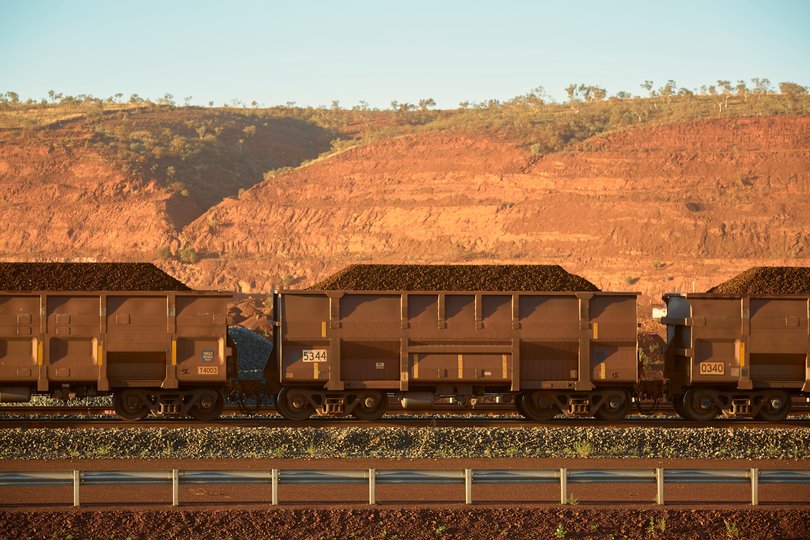Record-breaking year for BHP’s WA iron ore arm while its Canadian potash plan suffers $2.6b cost blowout

BHP’s Pilbara iron ore machine fired on all cylinders but inflation and slow construction has thrown a $2.6 billion spanner in the works of its Canadian potash push.
Total iron ore exports from BHP’s mines during the 2025 financial year rose to 290 million tonnes, following a strong finish in the fourth quarter.
The FY2025 result was a one per cent higher than the 12 months prior and in line with The West Australian’s predictions earlier this month.
Sign up to The Nightly's newsletters.
Get the first look at the digital newspaper, curated daily stories and breaking headlines delivered to your inbox.
By continuing you agree to our Terms and Privacy Policy.South Flank exceeded nameplate capacity production of 80mt in its first full year.
Realised prices for a tonne of the steelmaking ingredient plunged 19 per cent to $US83.13 as the heat came out of the commodities market and spot prices fell below the $US100/t barrier multiple times during the year.

The Big Australian said record production was delivered despite the impact of tropical cyclone Zelia and tropical storm Sean that lashed the Pilbara in early 2025, and the planned increase in tie-in activity of its multi-year rail technology program.
Investors may be disappointed by the miner’s forecast for the current financial year, with a production guidance range of between 282mt and 294mt.
But investors would be even more disappointed with a huge cost blowout and first production delay at its massive Jansen potash project in a cold and barren patch of Canada.
Building the first stage of Jansen originally had a $US5.7 billion ($8.8b) budget but BHP said the expected cost has risen to between $US7b and $US7.4b ($11.4b).
First production of Jansen’s potash — a fertiliser product used to improve crop yields — has now been pushed back from the tailend of 2026 to the middle of 2027. Jansen is currently 68 per cent built.
BHP pinned the price tag blowout and construction delays on “inflationary and real cost escalation pressures, design development and scope changes and our current assessment of lower productivity outcomes over the construction period”.
It was a better story for BHP in copper, which has been a core commodity focus area of the Big Australian in recent years.
Total copper production jumped for a third consecutive year, a 28 per cent increase from FY22, to a record 2.02 million tonnes.
But output is expected to dip this year to between 1.8mt and 2mt as its Escondida mine in Chile taps into lower grade ore.
Escondida accounted for the bulk of global production, delivering 1.3mt — a 16 per cent rise on the previous year and its highest production figure in 17 years thanks to record concentrator throughput and improved recoveries.
“BHP delivered record iron ore and copper production, which demonstrates the strength and resilience of our business and underpins our ability to deliver growth and returns to shareholders amid global volatility and uncertainty,” the miner stated.
It noted commodity demand globally remained resilient so far in 2025, largely reflecting China’s “ongoing ability to grow its overall export base” despite a significant decline in exports to the US amid its trade feud with president Donald Trump and a floundering property market.
“Copper and steel demand have benefited from a sharp acceleration in renewable energy investment, electricity grid build out, strong machinery exports and EV sales,” BHP said.
“While slower economic growth and a fragmenting trading system remain potential headwinds, stimulus efforts by China and the US would help to mitigate the near-term impact.
“Going forward, China’s 15th five-year plan is likely to provide more visibility on policies to sustain longer term growth and development.”
Shares in BHP were up 1.6 per cent to $39.75 in early Friday trade.
Citi analyst Kate McCutcheon said BHP’s June quarter production across copper, iron ore, and coal beat expectations and net debt at June 30 of approximately US$13b was better than Citi’s anticipated US$14.8b.
“Jansen start up pushed back to mid 2027 with capital expenditure up materially and stage 2 potentially to be pushed out distracting from what was otherwise a good FY2025,” she said.
